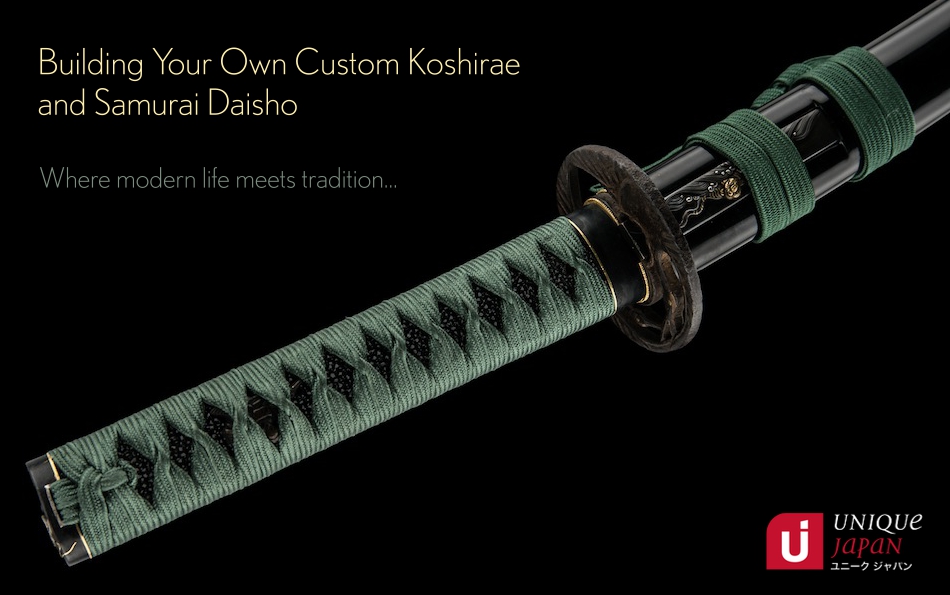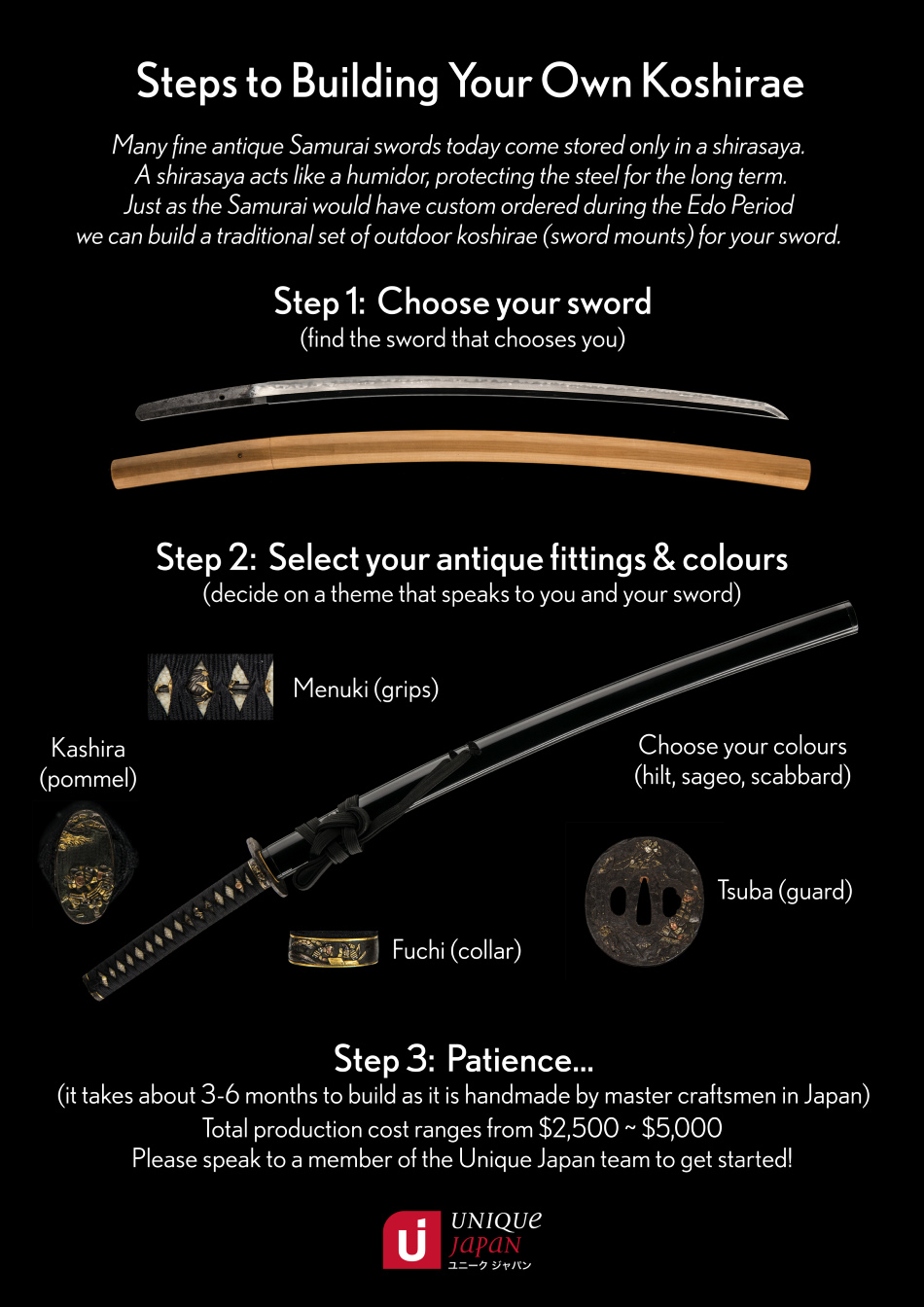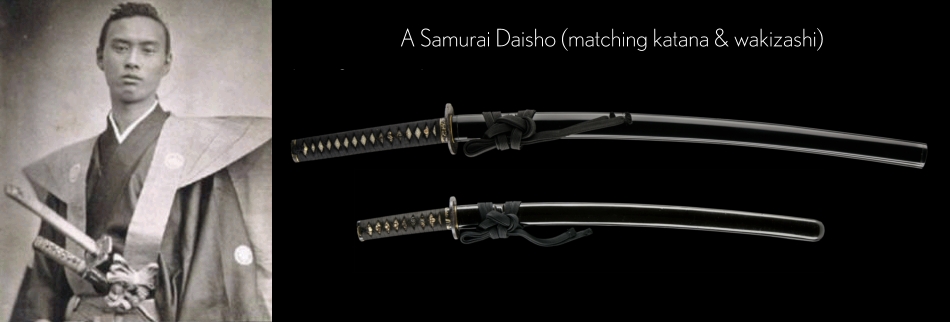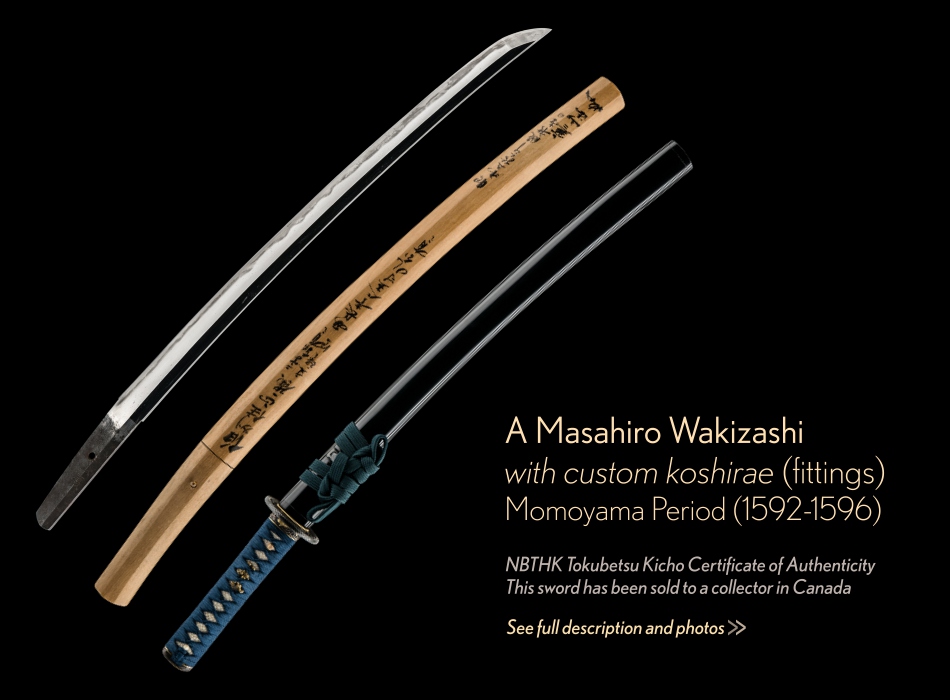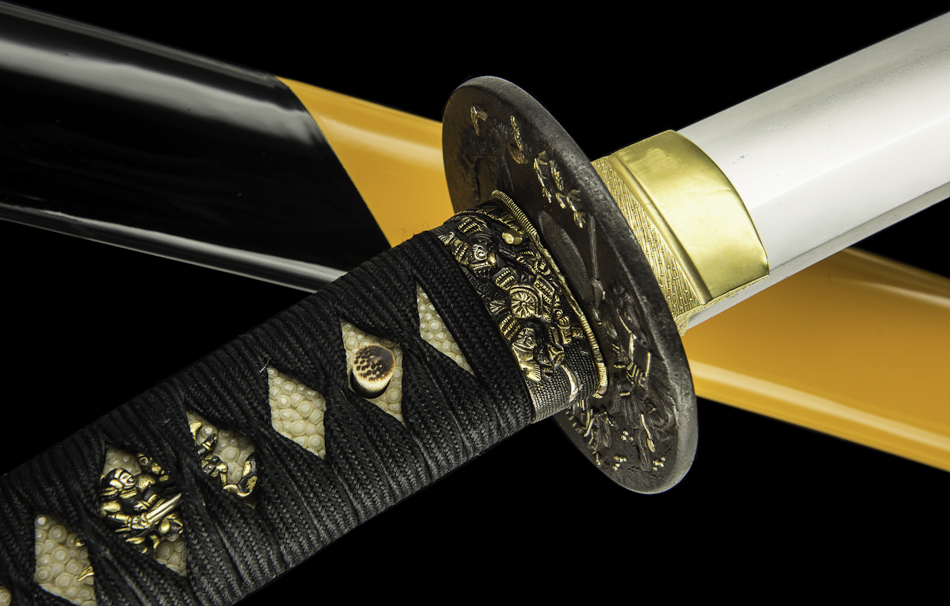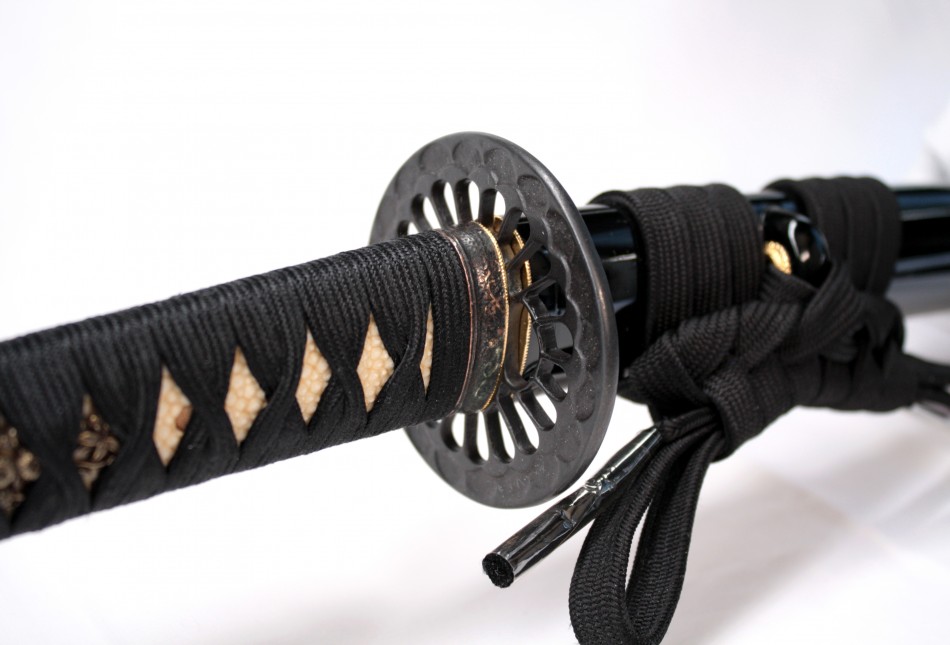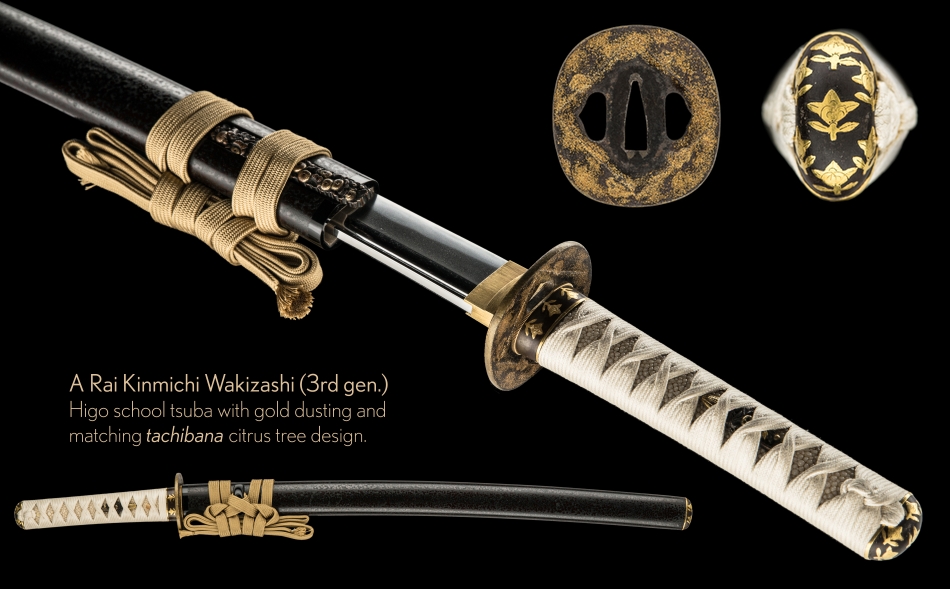Overview:
When sourcing swords for our clients, we often acquire swords without koshirae the traditional Samurai fittings that prepare the sword for battle. Many top-quality swords are, in fact, housed only in a beautiful custom-made shirasaya (white scabbard).
There are a couple main reasons for this:
The Japanese sword and other weapons were banned from public wear during the Meiji period in 1876 with the fall of the Samurai class. This edict was called Haitorei. Demand for custom fittings meant for a Japanese sword naturally declined significantly.
The other is that koshirae that does exist from the Edo period (pre-1868) are often found not in great shape. The first thing to suffer is the silk wrapped on the hilt. It will naturally fray after a few decades. The rayskin under the silk will also dry up and crack.
Furthermore, the scabbard, which is made of wood and lacquered, can be found damaged and weakened if neglected.
Therefore, it is increasingly difficult to find koshirae that still exists in excellent condition.
Thankfully, with the PASSION of our clients we’re giving antique Samurai swords a new life of appreciation by building traditional custom made koshirae especially for them. Scroll down to see examples of completed koshirae projects and how you too can become involved in the process!
What exactly is a shirasaya?
A shirasaya, literally “white scabbard”, is a wooden Japanese blade mount consisting of a saya (scabbard) and tsuka (hilt), traditionally made of made of honoki (magnolia wood) – a type of wood generally found only in Japan.
A shirasaya is like a pair of pyjamas, or sleeping wear for the Japanese sword. When not carried in public or on the battlefield by their Samurai owner, Japanese swords are rested and kept protected in their shirasaya. Therefore, Japanese swords are meant to have two sets of furniture; one set for resting (shirasaya) and one for battle (koshirae).
The need for an actual specialized storage device was because prolonged koshirae mounting actually harmed the blade, owing to factors such as the lacquered wood retaining moisture and encouraging corrosion. A shirasaya is custom-made to the sword matching its exact length and curvature by a skilled craftsman. It allows the sword to “breath”.
A Custom Koshirae Project: Where Modern life meets tradition
A custom koshirae (pronounced “koh-shee-rye”) involves blending fittings from the Edo-period (pre-1868) with modern-day craftsmanship.
The great news is that the tsuba (guard), the fuchi-kashira (collar/pommel) and menuki (grips under the silk on the hilt) can be all be sourced from the 19th century and earlier. They are made from a variety of soft metals such as shakudo or shibuichi to the classic iron fittings. They will live on and on.
The tsuka (hilt) and saya (scabbard) will be crafted from scratch to the exact dimensions of the sword by a modern-day artisan using traditional techniques.
A Rewarding Project
A custom koshirae project is very rewarding because just like a Samurai, you can embed your own personality within the sword. Samurai (especially high-ranking Samurai) often had a number of koshirae made for their favourite swords and occasions (battle, formal wear, etc.).
Plus by creating a koshirae, we are supporting the modern-day craftsmen and women that carry on these marvellous handmade centuries-old traditions. Several hours of full concentration and attention to detail are put into the making of each koshirae.
Cost and Timeframe
The cost to make a custom koshirae generally ranges from $5,000 to $10,000. The main driving factor in determining the final price are the individual antique pieces that make up the koshirae and the lacquering technique applied. This is especially true for fittings that are signed and/or have NBTHK or NTHK-NPO conservation certification.
A custom koshirae project takes 6-18 months to complete.
Building Your Own Custom Daisho
A particularly special project that we recommend is to build your own custom daisho (matching katana and wakizashi). The daisho was the official dress code of the Samurai during the Edo period. It was rigidly enforced from 1626 to 1868.
Visually speaking, there is nothing quite like the impressiveness of an authentic daisho on display in a home or office. It exudes a feeling of majesty and calmness.
Steps to building Your Daisho:
Step 1. A close discussion is had with the client to confirm project aspirations. Matters such as the type of sword combination, the theme of fittings and overall budget is shared.
Potential sword options that are in stock (often not listed in the catalogue) are presented to the client in person or images via email.
Step 2. We source and secure a katana and wakizashi that compliment each other. Commonality could be that the swords are by the same swordsmith, from a similar time period (or vastly different time periods), by the same school or tradition, etc. Overall we always seek a grand visual balance with a story to tell.
Full payment (or deposit with longer-term payment plan) for the swords is made in advance.
Step 3. We source matching Edo-period daisho-specific fittings of a chosen theme that the client feels a personal connection with. We can also source fittings that are very similar in design or create modern fittings too.
Client decides on a matching colour and style for the scabbards. A common colour is also selected for the tsuka-ito (silk or leather wrap for the hilts).
Step 4. Photos and prices of potential fittings are shared with the client in advance. Once client has given full approval of the fittings, we build the daisho. This takes about 3-6 months.
Note: Producing matching scabbards lacquered in traditional black (such as the photo above) is often quicker to produce.
Step 5. Upon completion of the daisho, final payment is made for the koshirae production. We then securely ship the swords to you. Congratulations!!
Daisho Production Cost
The cost to produce a genuine Samurai daisho ranges. Generally speaking, the completed production cost of two antique swords with matching daisho fittings starts at around $25,000.
The investment into a pair of swords by a celebrated swordsmith(s) with a high degree of NBTHK or NTHK-NPO origami certification will be greater, but always worthwhile.
Let’s Get Started!!
We’d be more than delighted to make the dream of a custom koshirae or custom daisho a reality for you. The joy that you’ll receive with owning an authentic Japanese sword that has been personalized is monumental. It will become a treasure that your family will cherish for many lifetimes ahead.
To get started, be sure to download our latest catalogue to source an available sword that is in shirasaya only. Also please contact Unique Japan to enquire about available swords that may not be listed in the catalogue.
We look forward to serving you.
Below are images of some completed koshirae projects. Let it is serve as inspiration for yours!
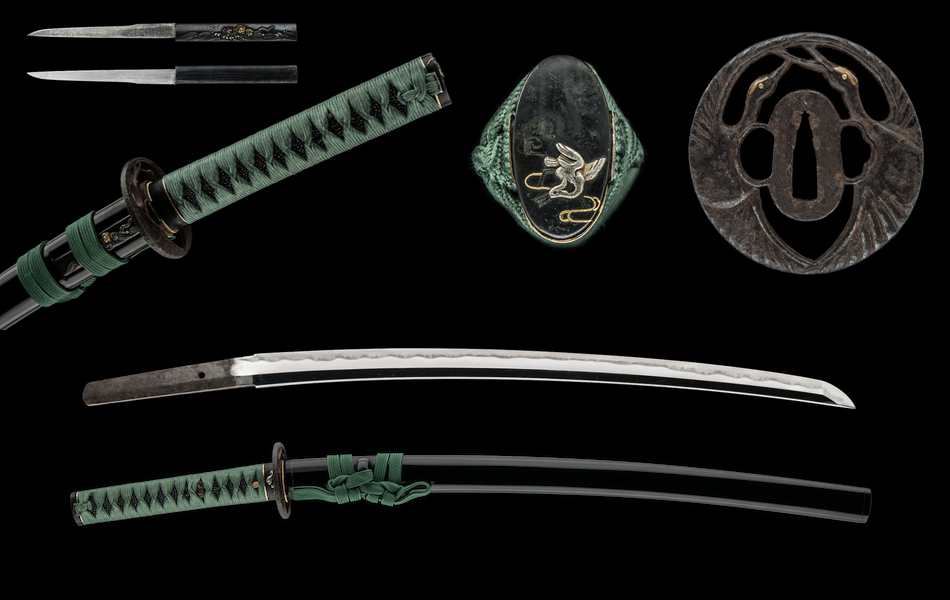
A Sukesada wakizashi from 1574 that carries a theme using Japanese cranes, or tsuru. Tsuru is said to bring long life and prosperity. The green hilt and sageo gives the sword life.
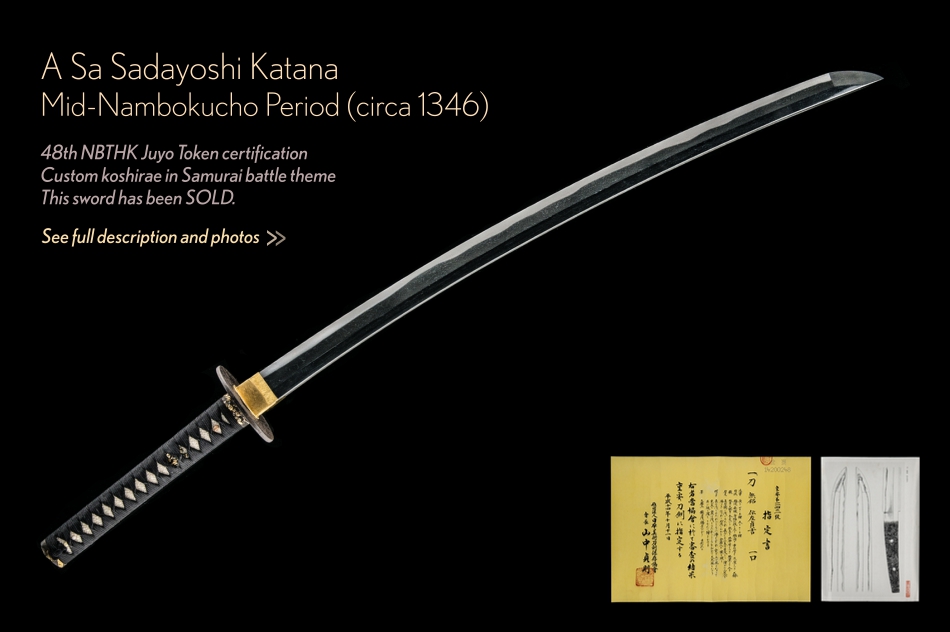
An awesome Sa Sadayoshi katana from the 14th century with NBTHK Juyo certification. Koshirae features Samurai warrior fittings. Click for details and photos.
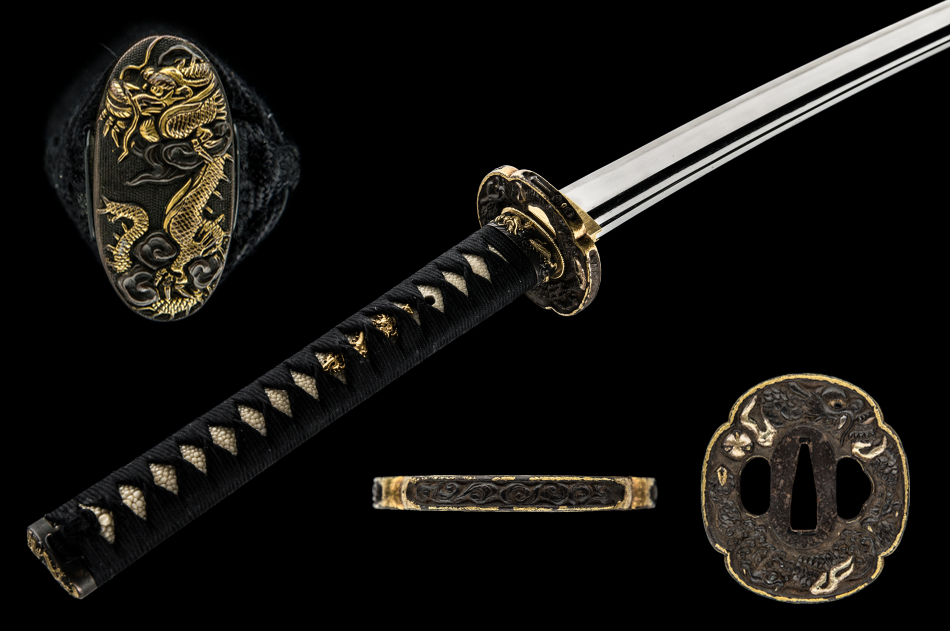
A powerful signed Houju katana from the 14th century with a fierce dragon fittings.
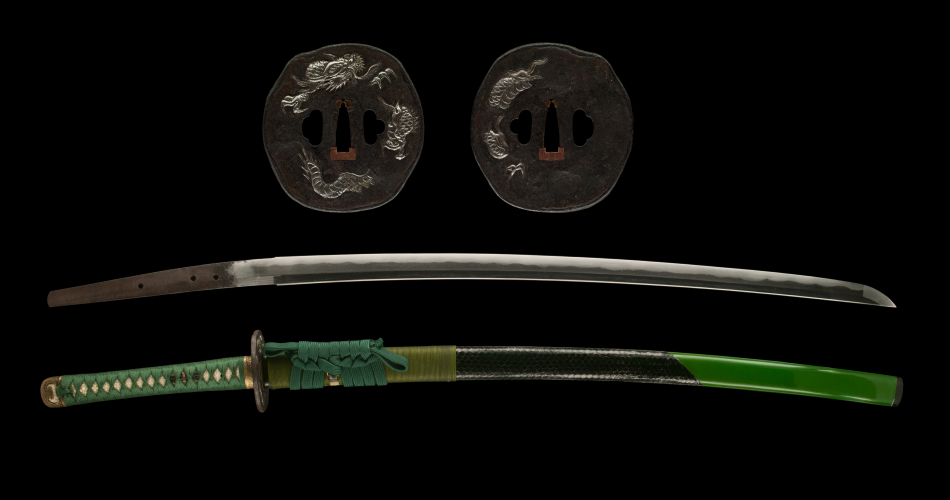
An Iehira katana from the 17th century with a stunning set of mounts. Click here to see further images and project brief.
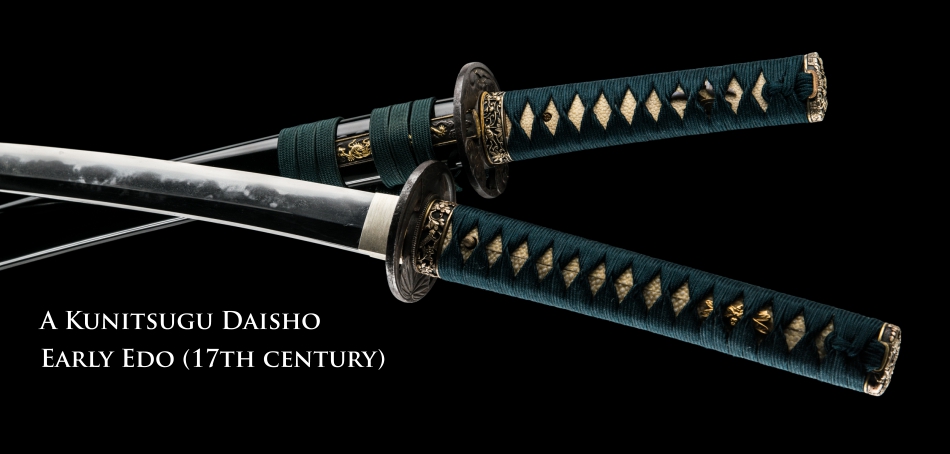
A stunning daisho both signed by swordsmith Kunitsugu.
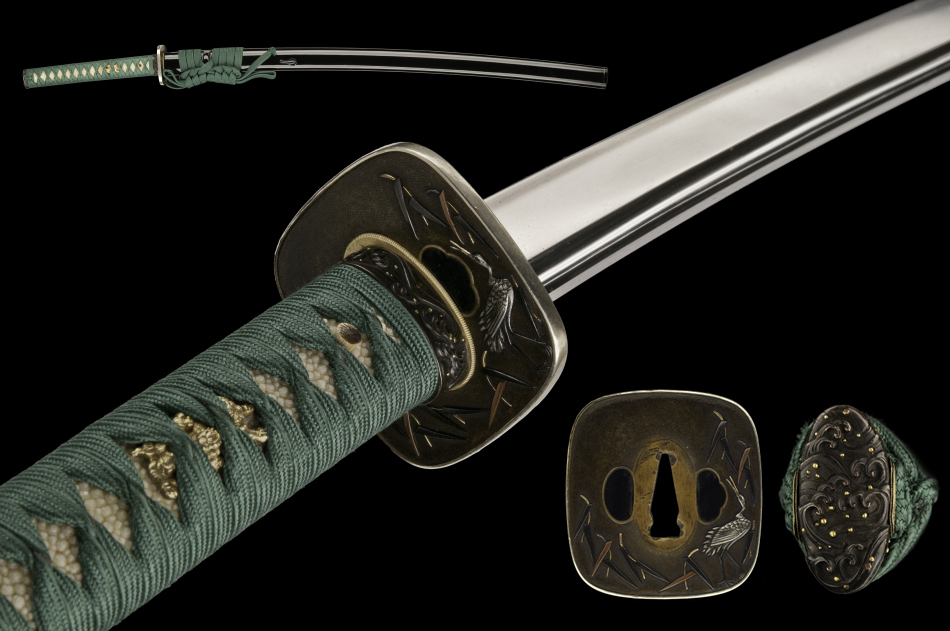
A 15th century Hokke katana with cranes, waves and gold shisa lions that spiritually protect the sword.
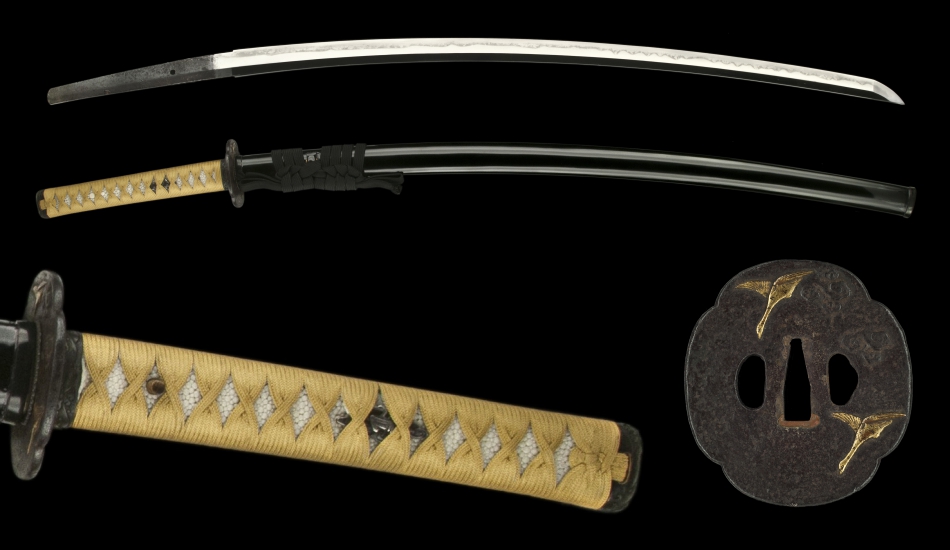
A massive 75cm katana signed by Tomotsugu. This was one of our first koshirae projects. It gives off an incredible energy. Details.
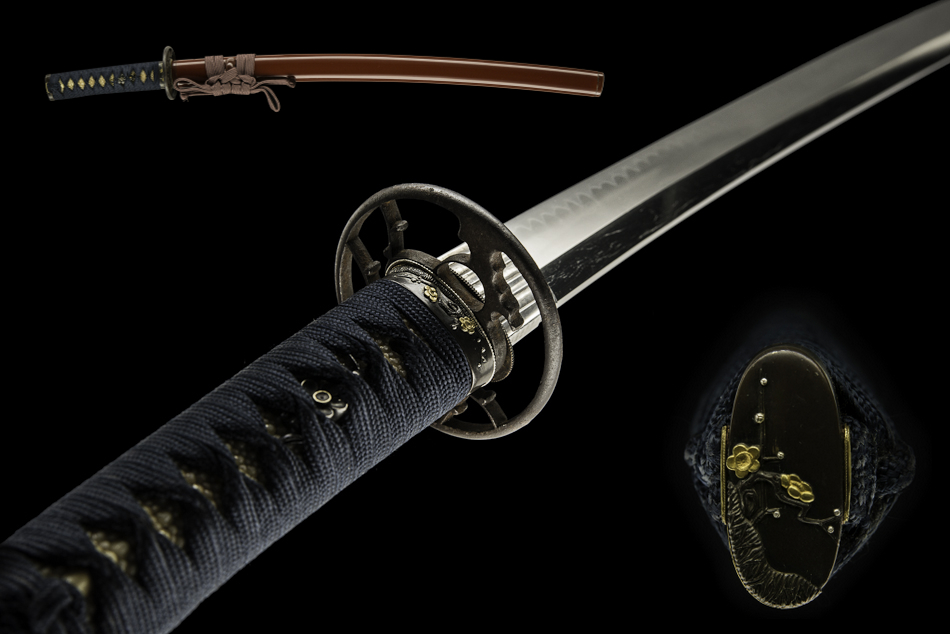
A lovely Kaneiwa wakizashi that features a koshirae in the theme of ume (plums). This sword was created to celebrate the birth of a baby girl named Ume. Details.
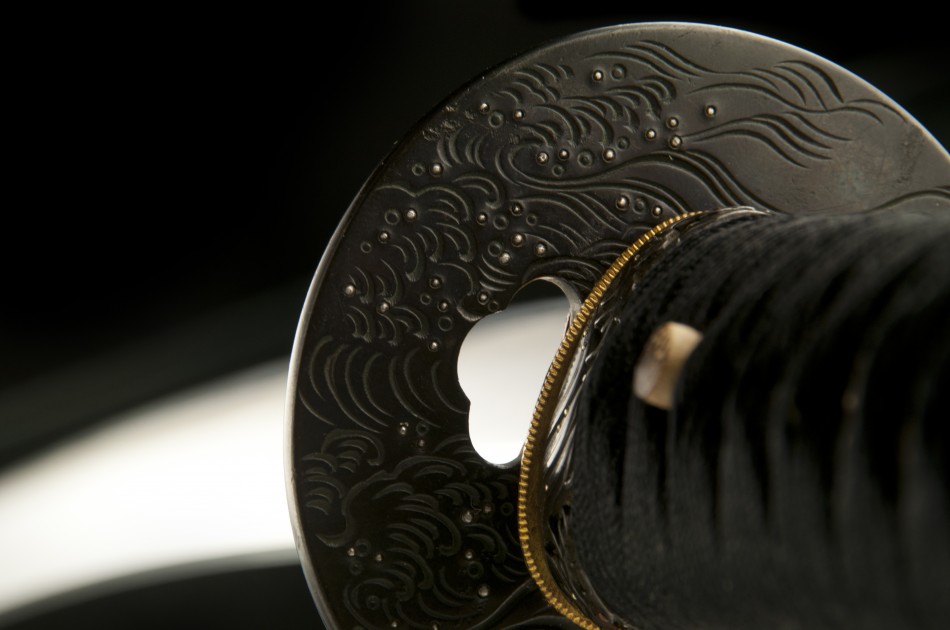
An impressive 15th century katana signed by Naminohira Yoshiyasu. Nami means waves, therefore a koshirae with rolling waves was created. Details.
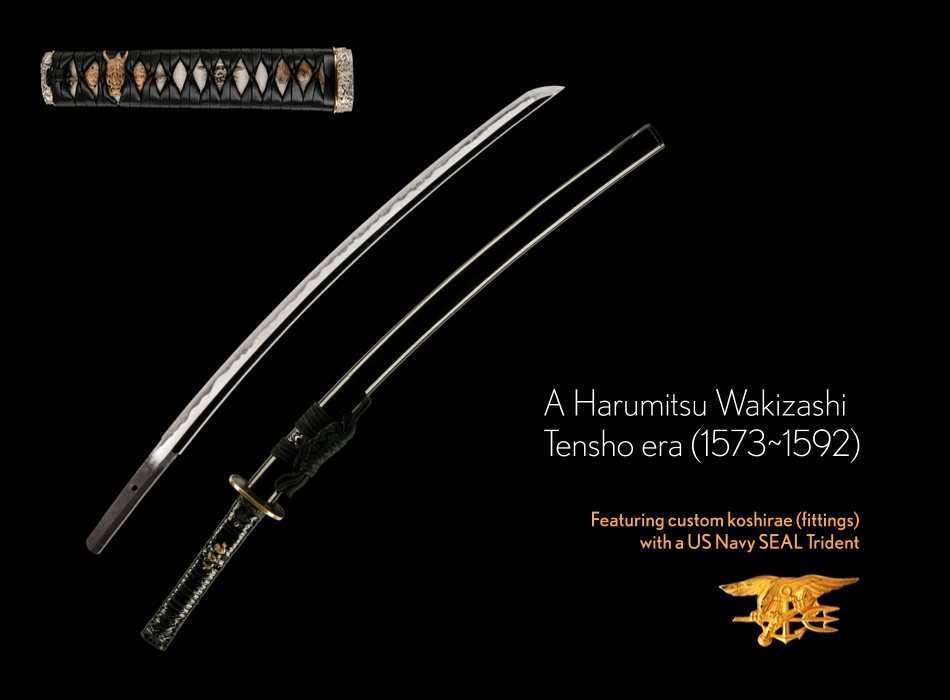
View Details of a Harumitsu Wakizashi with Navy SEAL trident built for former Navy SEAL Mr. Chris Caracci.
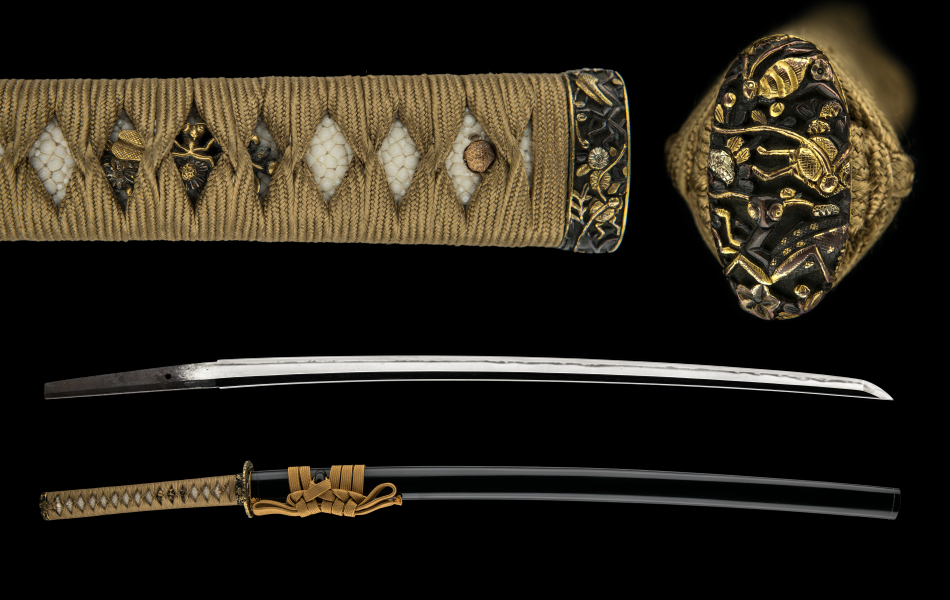
A 450-year-old Kiyomitsu katana that was first polished, then had a custom koshirae theme made that features kamakiri (praying mantis).
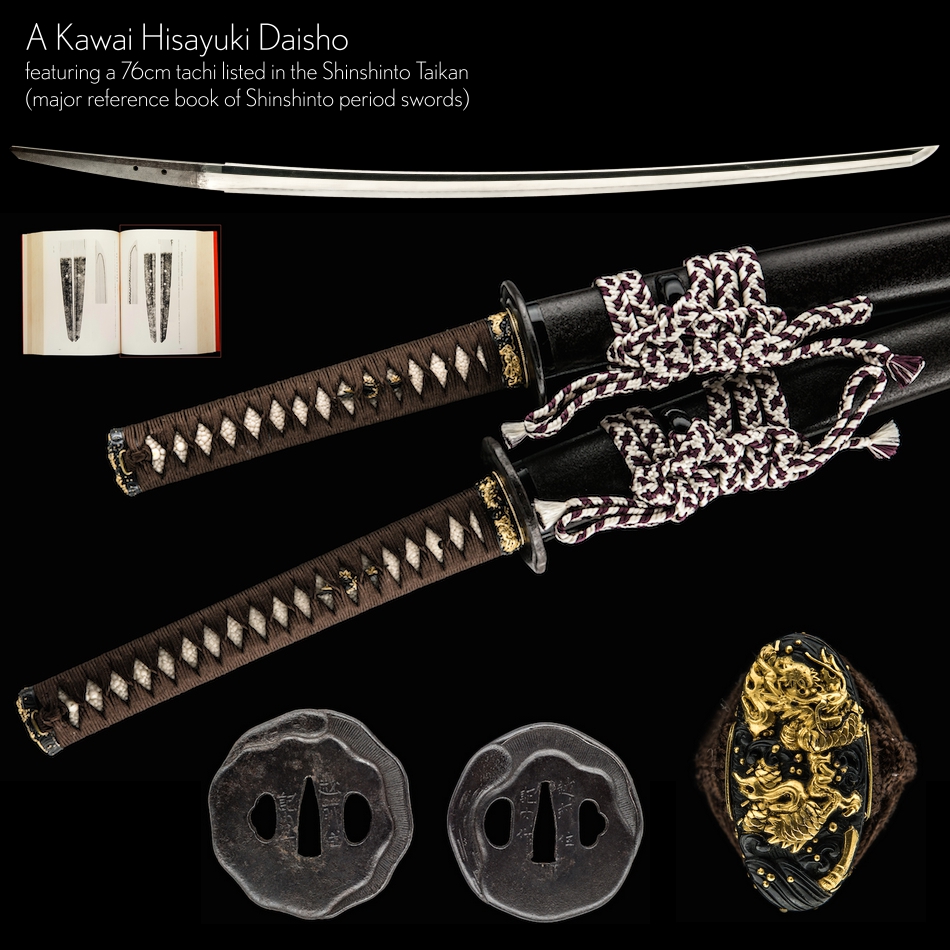
A custom-made daisho for two tremendous swords crafted by a talented Shinshinto Samurai, Kawai Hisayuki. Both swords were crafted when he was 75 and 81! Note the marvellous shitake mushrooms depicted on the tsubas. Tachi is listed in Shinshinto Taikan. Full details.
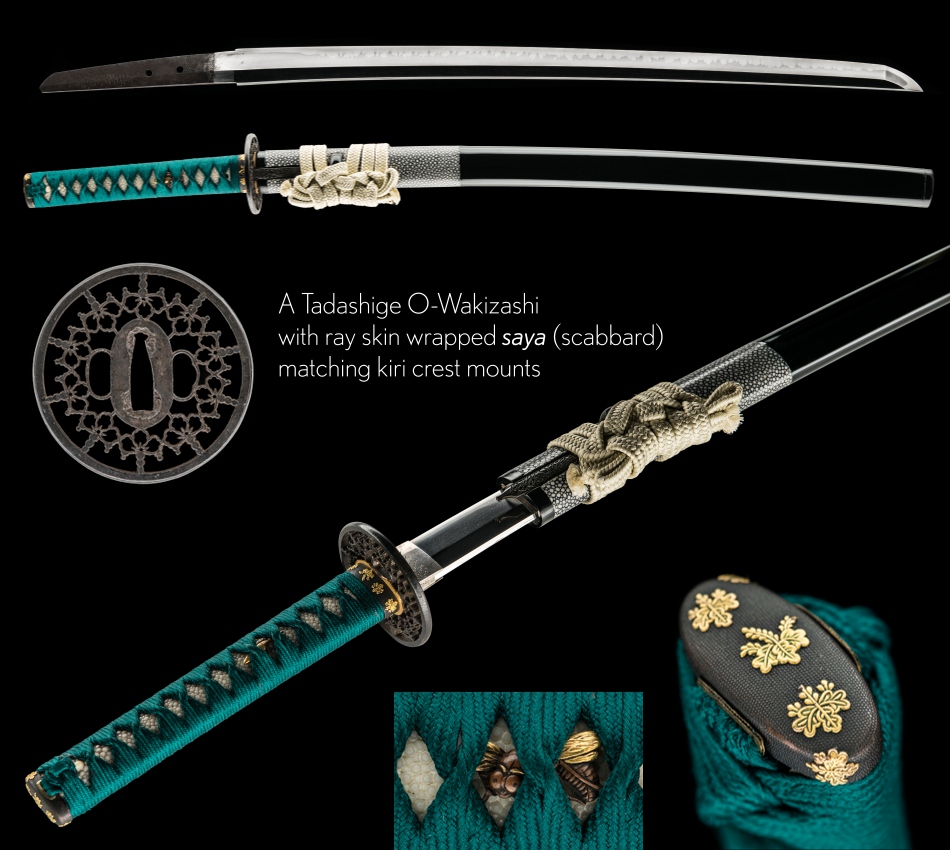
A beautiful koshirae was produced for this o-wakizashi (long wakizashi) by swordsmith Tadashige circa 1661. The scabbard is wrapped in ray skin adding an extra flavour to the creation. The fittings are a matching set of kiri-mon with powerful hornets as menuki guarding the sword. Don’t get too close or I’ll sting ya!
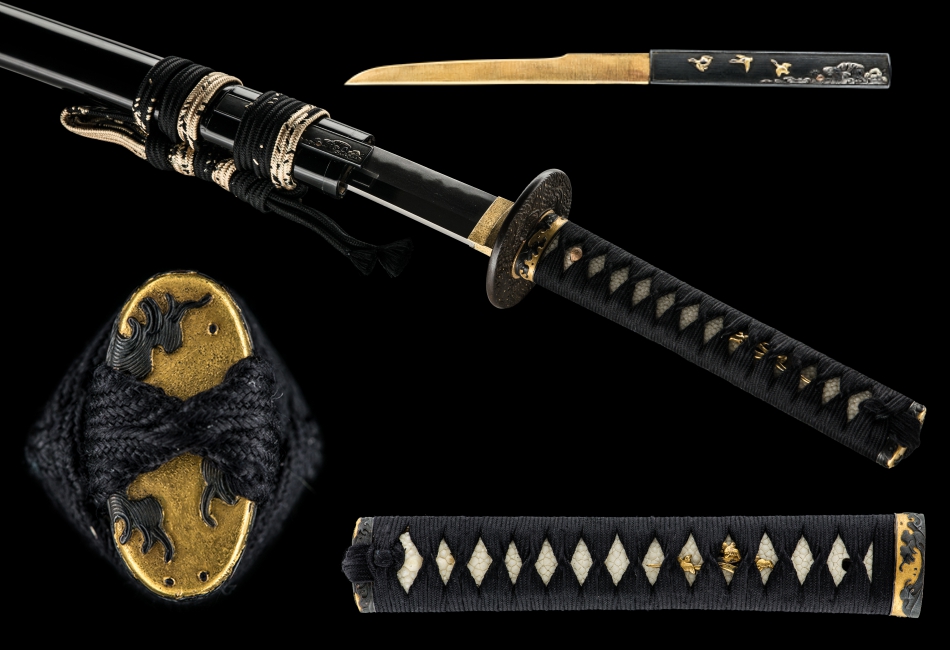 A stunning koshirae built for a wakizashi by Jojo-saku smith Oku Yamamoto no Kami Taira Anson Motohira from Satsuma province in Kyushu, circa 1789.
A stunning koshirae built for a wakizashi by Jojo-saku smith Oku Yamamoto no Kami Taira Anson Motohira from Satsuma province in Kyushu, circa 1789.Interested in Ownership of an Antique Japanese Sword?
If owning an authentic Japanese Samurai sword is of interest to you and your family, we would be honoured to serve you.
To visitors in Japan…
If you have the pleasure of living in Japan or visiting the country, we recommend that you come to one of our upcoming sword shows or schedule a private VIP meeting with us.
VIP meetings are normally held near JR Ebisu station in Tokyo at a hired gallery space. We can also arrange visits to a company office, hotel, near the airport or at a private residence.
To visitors around the world…
To those exploring our collection online, be sure to download our catalogue of available swords here.
Be sure to become part of our VIP Email List as all catalogues are pre-sent to VIPs before they are released to the public.
We completely respect the fact it takes a HUGE leap of personal FAITH in us to commit to a particular sword given the reliance on photos and descriptions for such a highly valued item.
It is our PROMISE to address all your questions to the best of our ability. It’s important to us that you feel completely confident that the sword you choose (and that chooses you) is destined for you and your family.
You can also take reassurance that ALL swords from Unique Japan are GUARANTEED AUTHENTIC and come with a 3-DAY WORRY FREE inspection period upon arrival to your home.
Legal Exportation from Japan
Yes, it is completely legal to own a genuine antique Japanese sword (even those that are several hundreds of years old). Unique Japan specialises in all proper legal compliances so that swords can be exported from Japan.
All required paperwork is provided free of charge for clients.
All required paperwork is provided free of charge for clients.
Unique Japan has safely sent well over 400 swords FROM Japan to immensely proud owners in the United States, Australia, Europe, Hong Kong, Canada and around the world.
We look forward to making your dream of owning an authentic Japanese sword a reality for you.
Popular Pages of Interest
→ 7 Points to Consider when Choosing your Japanese Sword
→ 5 Steps to Owning an Authentic Japanese Samurai Sword
→ Download catalogue of currently available Japanese swords
→ Building your own custom koshirae and daisho, recommended!
→ PARTS of a Japanese Sword and Mountings (High-quality images)
→ 7 reasons WHY I love Japanese swords
→ Resource Information on Japanese Swords
→ NBTHK Certification Paper Ranking for Japanese Swords
→ NTHK-NPO Certification Paper Ranking for Japanese Swords
→ 5 Steps to Owning an Authentic Japanese Samurai Sword
→ Download catalogue of currently available Japanese swords
→ Building your own custom koshirae and daisho, recommended!
→ PARTS of a Japanese Sword and Mountings (High-quality images)
→ 7 reasons WHY I love Japanese swords
→ Resource Information on Japanese Swords
→ NBTHK Certification Paper Ranking for Japanese Swords
→ NTHK-NPO Certification Paper Ranking for Japanese Swords



